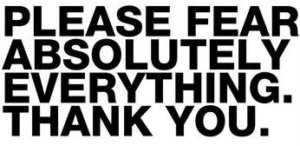It’s a new year – and a great time for Service Managers to reflect on ways to deliver more value for their Teams & Organizations in 2018.
Here are some ideas.
More problem prevention, less problem solving
You’ve earned the right to be proud when your Service Staff competently handle Customer inquiries.
But you serve a higher purpose when you stop and ask yourself – why do we get these inquiries in the first place?
 To solve that question requires courage.
To solve that question requires courage.
The courage to get up, leave your desk, and traverse your organization to piece together the root causes of Customer contact.
Because for most Customer Care & Technical Support environments – the best contact is no contact.
The best Service Quality Managers work ‘up and out’ throughout the organization. They don’t focus exclusively on their internal Staff performance.
More inspiration, less compliance
It’s so easy to get caught up in compliance.
Did Staff say the Customer’s name three times. Did they wear black socks.
Sure compliance matters – but it’s not the stuff of Staff inspiration or culture building.
In the best circumstances, Service Quality Managers help design ‘what kind’ of experience to deliver.
Then using vivid language – written with adults in mind – they create a ‘statement of experience’ that links the day to day activities of their Staff to the kind of experience the organization aims to deliver.
But crafting an inspirational statement of experience – while important – is only one aspect of inspiration.
 The best Service Quality Managers are also inspiring people.
The best Service Quality Managers are also inspiring people.
What they speak about, the way they speak, the rituals they build into the lives of their Staff.
The best Service Quality Managers understand the impact of inspiration and harness it through how they behave and what they do.
More ‘let’s try new things’, less ‘we have to do it the same way’
As the new year begins, some organizations will begin planning for Wave 12 of their  Mystery Shopper program, or Wave 23 of their Customer Satisfaction survey program.
Mystery Shopper program, or Wave 23 of their Customer Satisfaction survey program.
They will trot out exactly the same programs they’ve always run – with the refrain that ‘we need to keep things the same for trending analysis’.
With rapidly changing Customer expectations, delivery methods and opportunities to learn and grow, it doesn’t make much sense to keep looking at the past when your Customers live in the present (and of course the future).
Again, courage is required.
The courage to challenge senior leadership to be brave.
To set aside endless trending and really dig deep to learn.
To stop looking at only numbers and respond to what Customers want, need and feel.
The best Service Quality Managers keep updated on evolving approaches & practices in Customer experience and are willing to try new things to learn and grow their effectiveness.
More ongoing Staff development
In so many workshops, Participants tell me, “Dan, I haven’t attended a workshop, training or developmental program in (fill in the blank) years.
Many receive training at hiring and then, as the years roll by, they’re expected to organically ‘get better’ through repetition and tenure.
While I remind folks that they need to largely self-manage their own career these days – that’s not an excuse for organizations to forego Staff development.
The best Service Quality Managers understand that their Staff need to feel they are learning & growing to stay equipped and engaged.
More journey, less destination
Embedding daily, weekly and monthly rituals & storytelling practices, keeps Service & Customer experience front and center in the lives of your Service Staff.

Look deeply into the frequency and intention of your rituals.
A once a year ‘Service Week’ or participation in an industry Awards activity – on their own – won’t be enough to effect profound change.
Whether it’s the morning huddle or a weekly Customer sharing session it’s important to keep Customers front and center in the minds of your Staff.
If you commit to a monthly / quarterly Service ritual – then stick to it.
And use the ritual to focus on Customers – not organizational announcements.
The best Service Quality Managers know that meeting & exceeding Customer expectations is a journey, not a destination.
They design & execute meaningful rituals that routinely bring Customers to life in the lives of their Staff & Organization.
I hope some of these ideas were useful for you.
Happy holidays!
Daniel
Daniel Ord
[email protected] / www.omnitouchinternational.com




























 Can you imagine you’re sunning at the local swimming pool and you see someone struggling to stay afloat in the deep end?
Can you imagine you’re sunning at the local swimming pool and you see someone struggling to stay afloat in the deep end?













